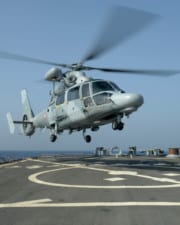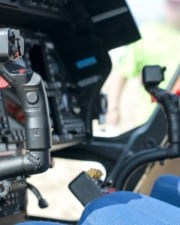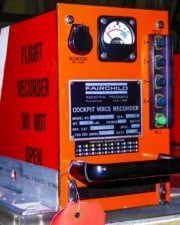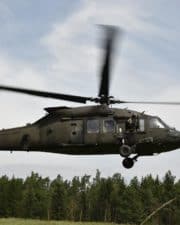Helicopters are complex flying machines that take special training to operate. Unlike airplanes, which are more or less stable once they’re off the ground, helicopters require constant control inputs from the pilot. Flying a helicopter straight ahead is a bit more involved than it is with an airplane.
Once the chopper is airborne in a hover, flying straight ahead is pretty simple. The pilot moves the cyclic control, which in turn adjusts the orientation of the rotor disk. If the rotor disk is pitched forward, the helicopter will begin flying straight ahead.
This article on how helicopters turn is part of a series on helicopter flight:
Takeoff and Hover
The most complicated part of getting a helicopter off the ground and flying through the air is getting it to hover. Hovering involves taking off vertically and maintaining a position over the same spot on the earth.
For a step-by-step guide to getting the helicopter off the ground and hovering, check out our article How Do Helicopters Hover?
Forward Flight in a Helicopter
Now that our theoretical helicopter is hovering in mid-air, the pilot can use the cyclic control, which looks like a joystick or fighter-jet yoke. This control column moves in all directions, and it changes the orientation of the rotor disk so that all of its lift is no longer vertical.
In other words, by tipping the rotor disk slightly forward, the helicopter will lose a little altitude but will also start moving forward. If the lift is increased enough, the chopper can maintain altitude while building forward speed.
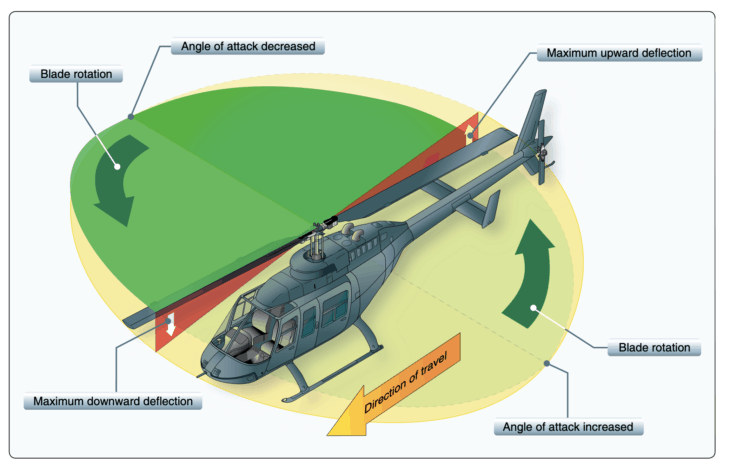
To accomplish all of this, the pilot needs to use all of their controls simultaneously:
- The cyclic is pushed slightly forward to build forward speed.
- The collective is raised slightly to increase lift to maintain altitude.
- Anti-torque pedal is added to increase the tail rotor force since torque was increased with the extra collective.

The cyclic is pushed further forward to fly faster, and all of the other corrections are made together again. To slow down, the cyclic is moved aft, and the collective and pedal are reduced.
Of all the things that helicopters can do, forward straight and level flight is designed to be the easiest. The vertical and horizontal stabilizers will help maintain control of the aircraft, and the chopper will be more stable than it is at any other time.
Flying in Other Directions
The pilot can move the rotor position in any direction from a hovering attitude, with a full 360 degrees of movement. That means that it’s easy for helicopters to not only fly forwards but can fly sideways and backward as well.
Flying in each other direction is inherently more challenging, however. The aircraft designers make the chopper more stable when flying forward. Air flowing over the vertical and horizontal stabilizers will help the helicopter keep its course during straight flight.
But in reverse, these design characteristics may actually destabilize the aircraft. For example, reverse airflow on the horizontal stabilizer will give a tail-down tendency when working in reverse. This is one of the trickier maneuvers for a helicopter pilot.

Likewise, flying sideways is more complicated than it might sound. Air flowing over the aircraft’s broadside will induce all sorts of turning moments. The aircraft’s motion will be opposed by the shape of the fuselage and cockpit area more than the tail is affected. Finally, the vertical stabilizer will correct that to some extent, but not entirely.
If you’re curious and would like to learn more about the inner workings and how to fly a helicopter, check out the FAA’s Helicopter Flying Handbook, available for free download online. Chapter 2 deals with the fundamentals of flight and the aerodynamics of flight.
Related Posts




